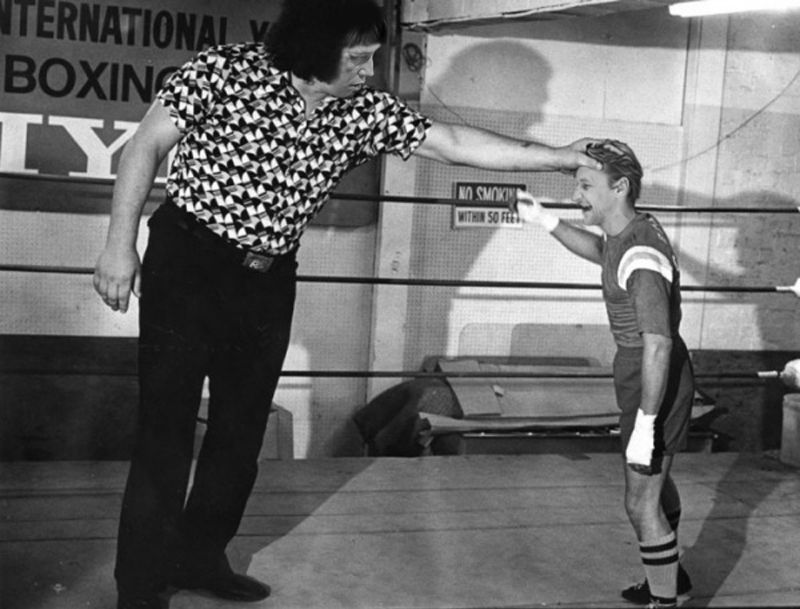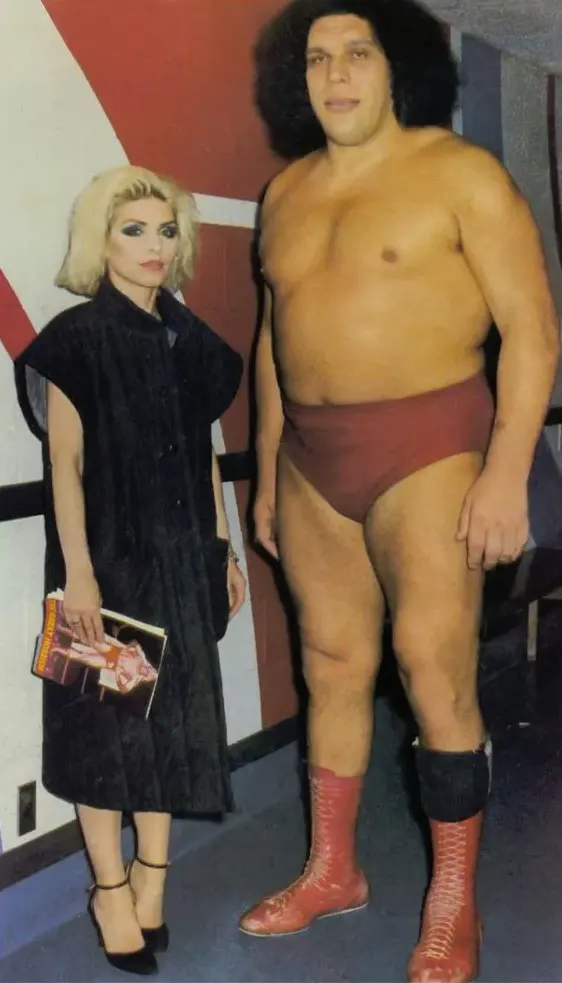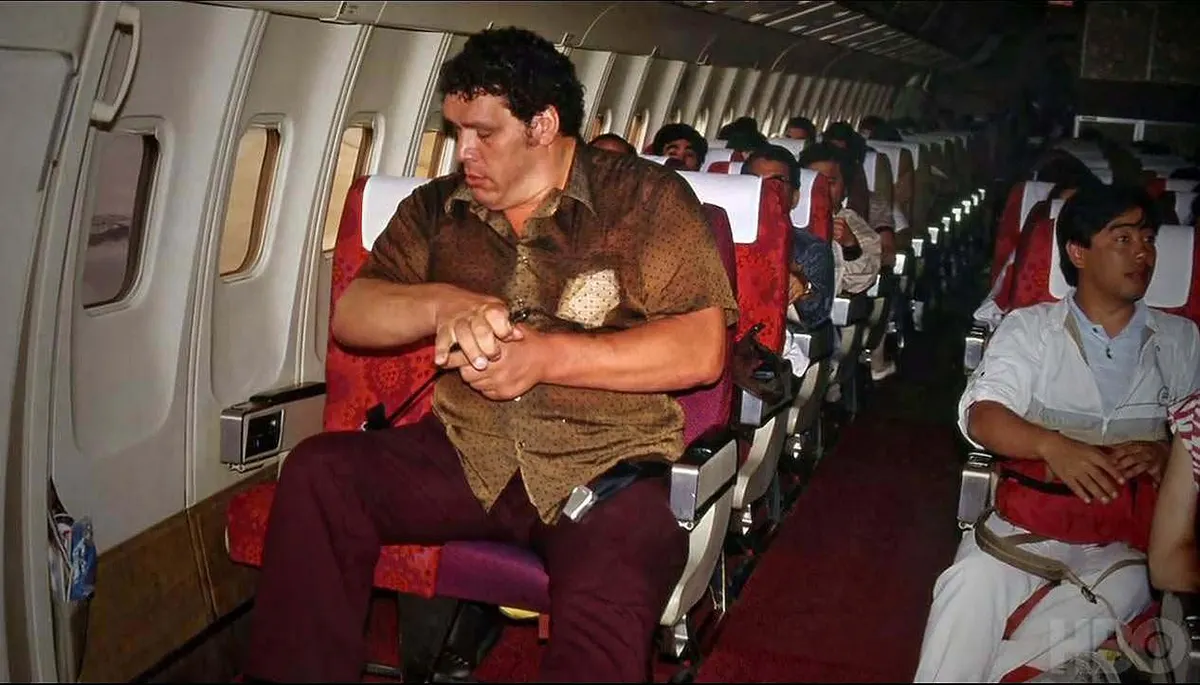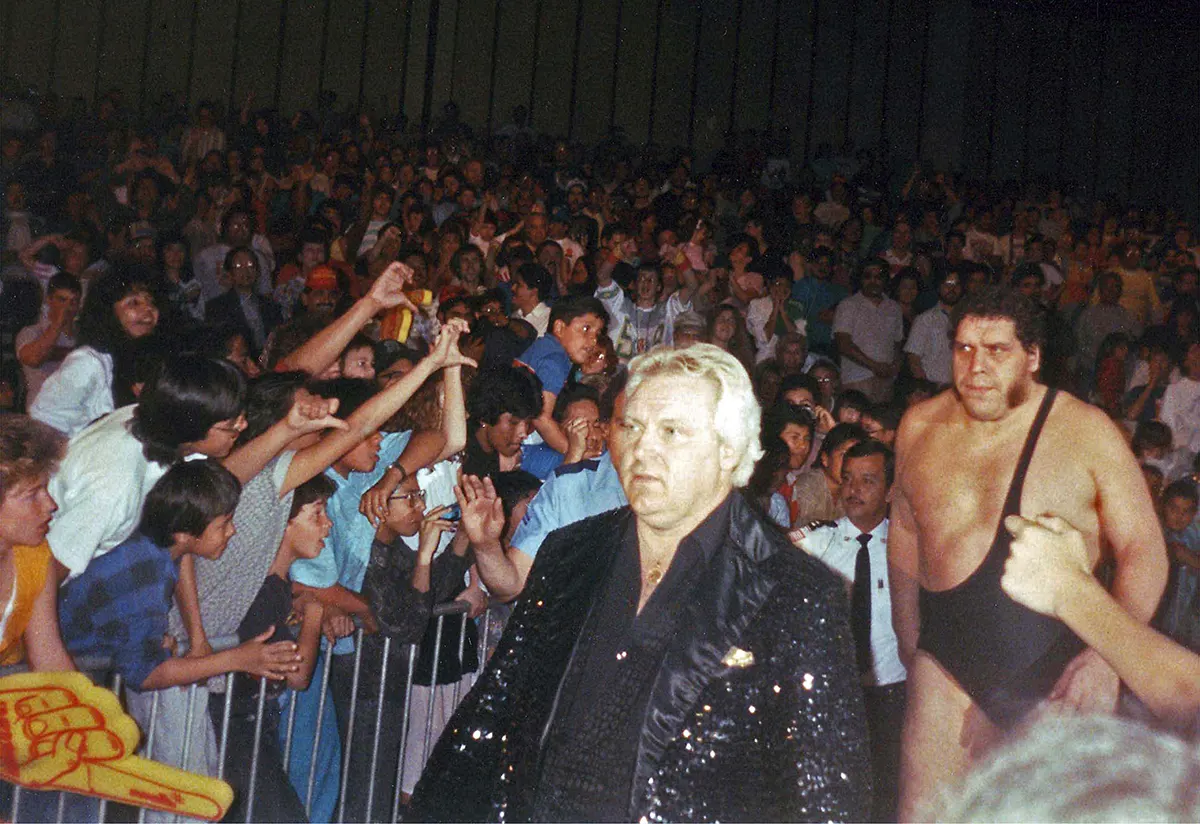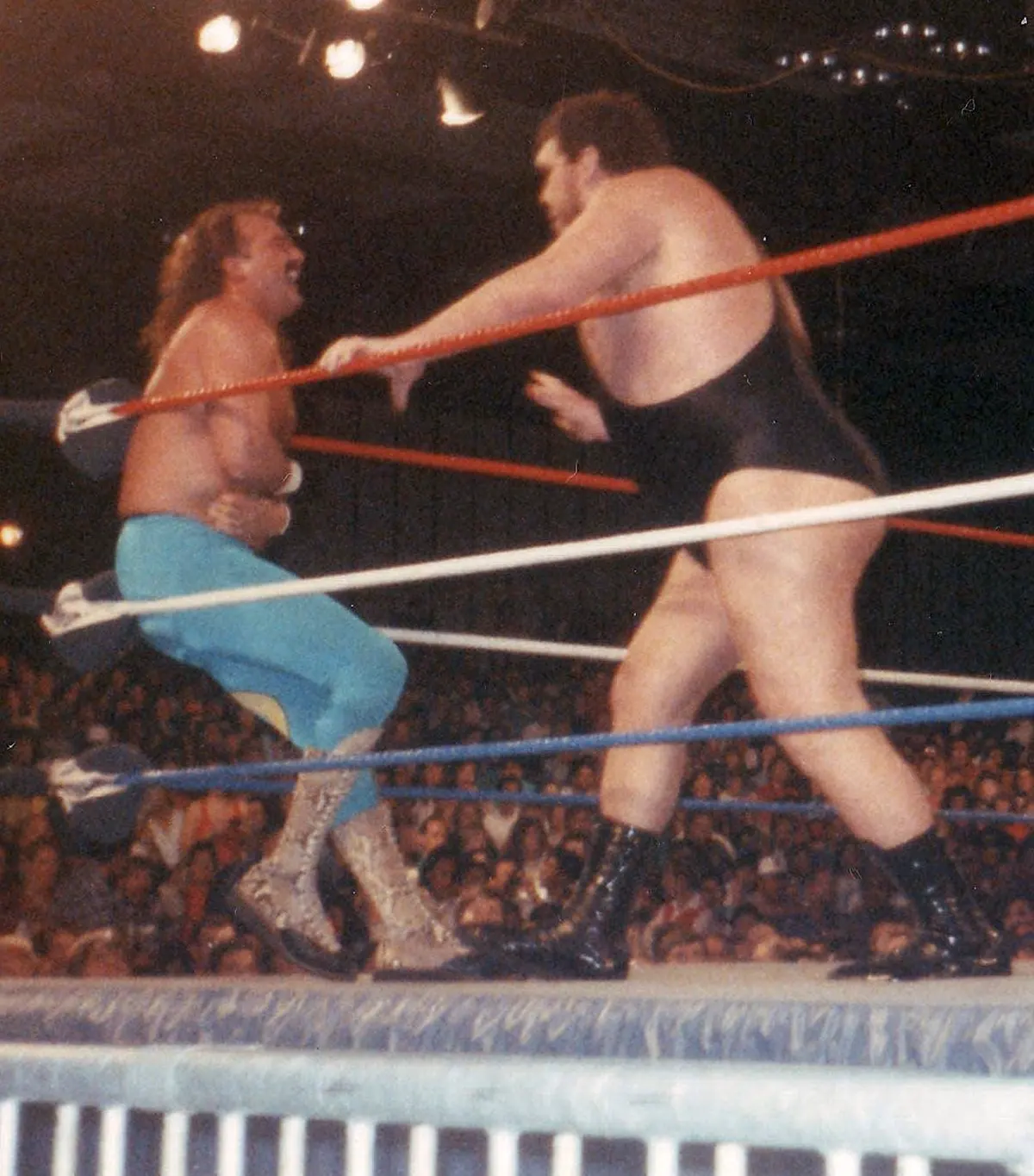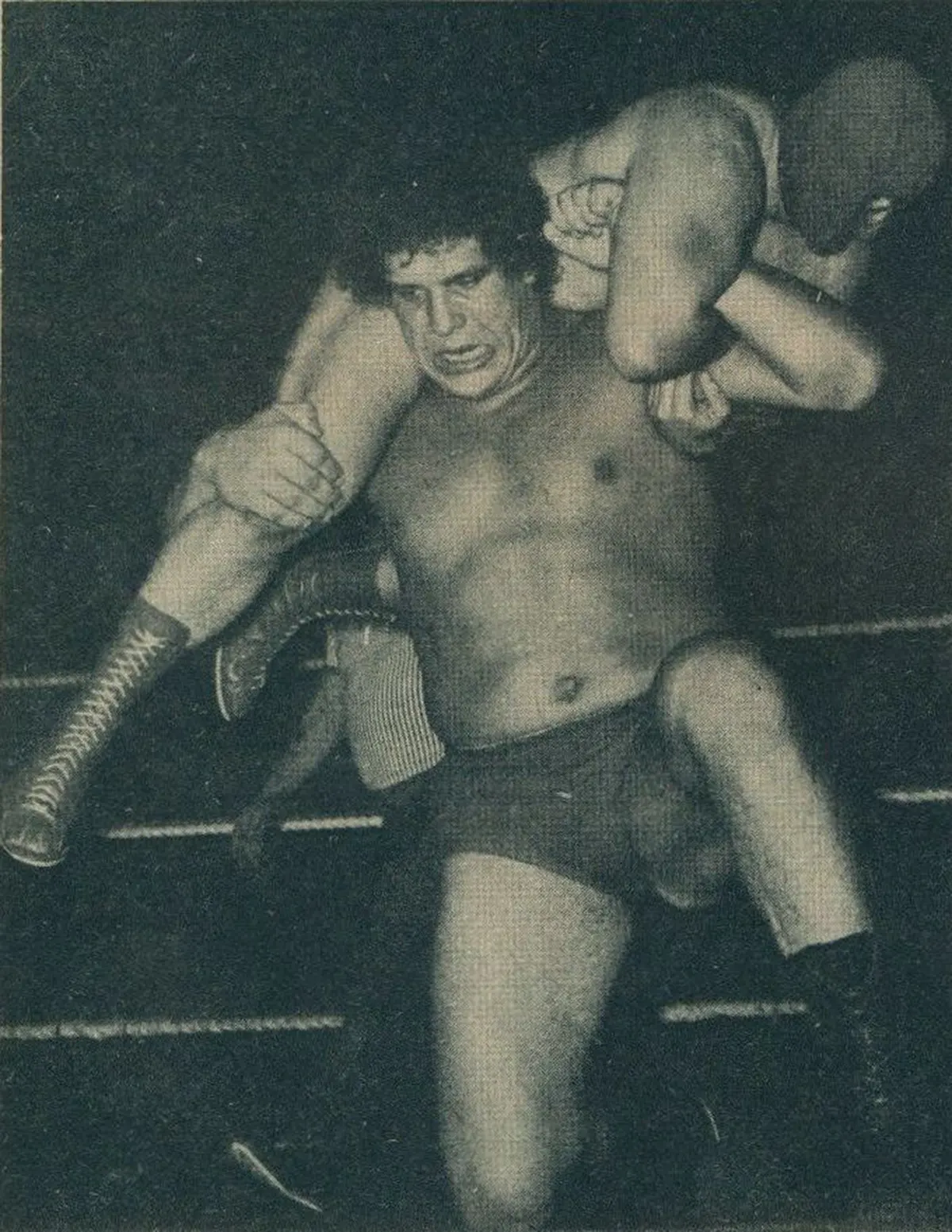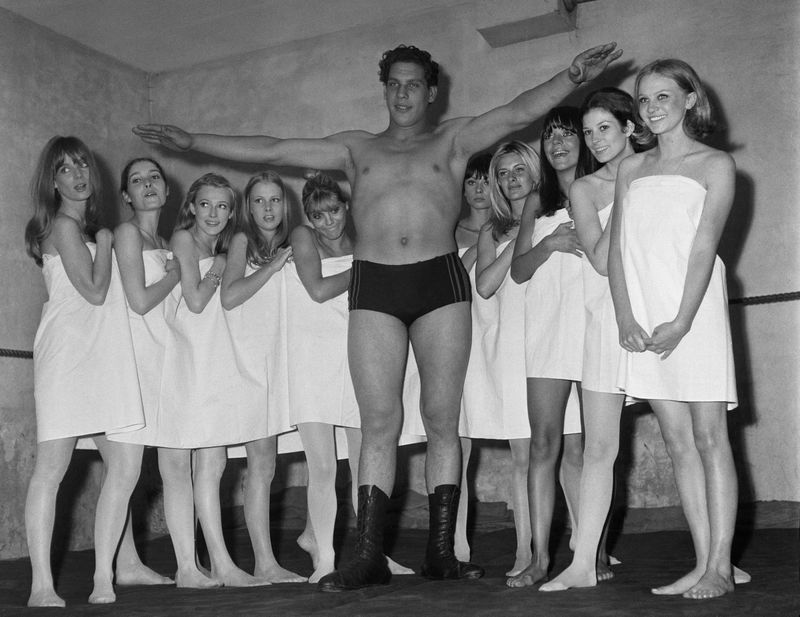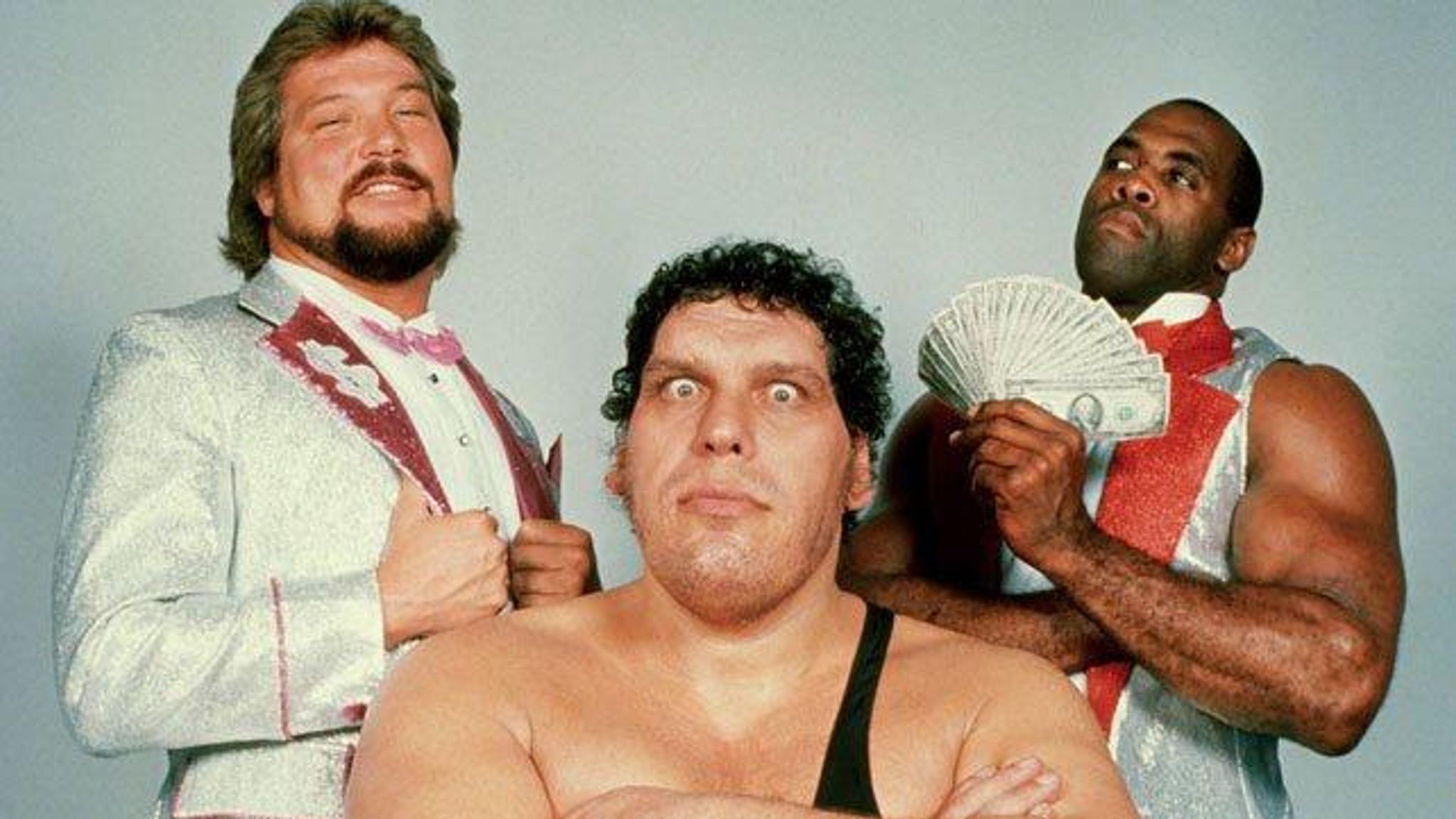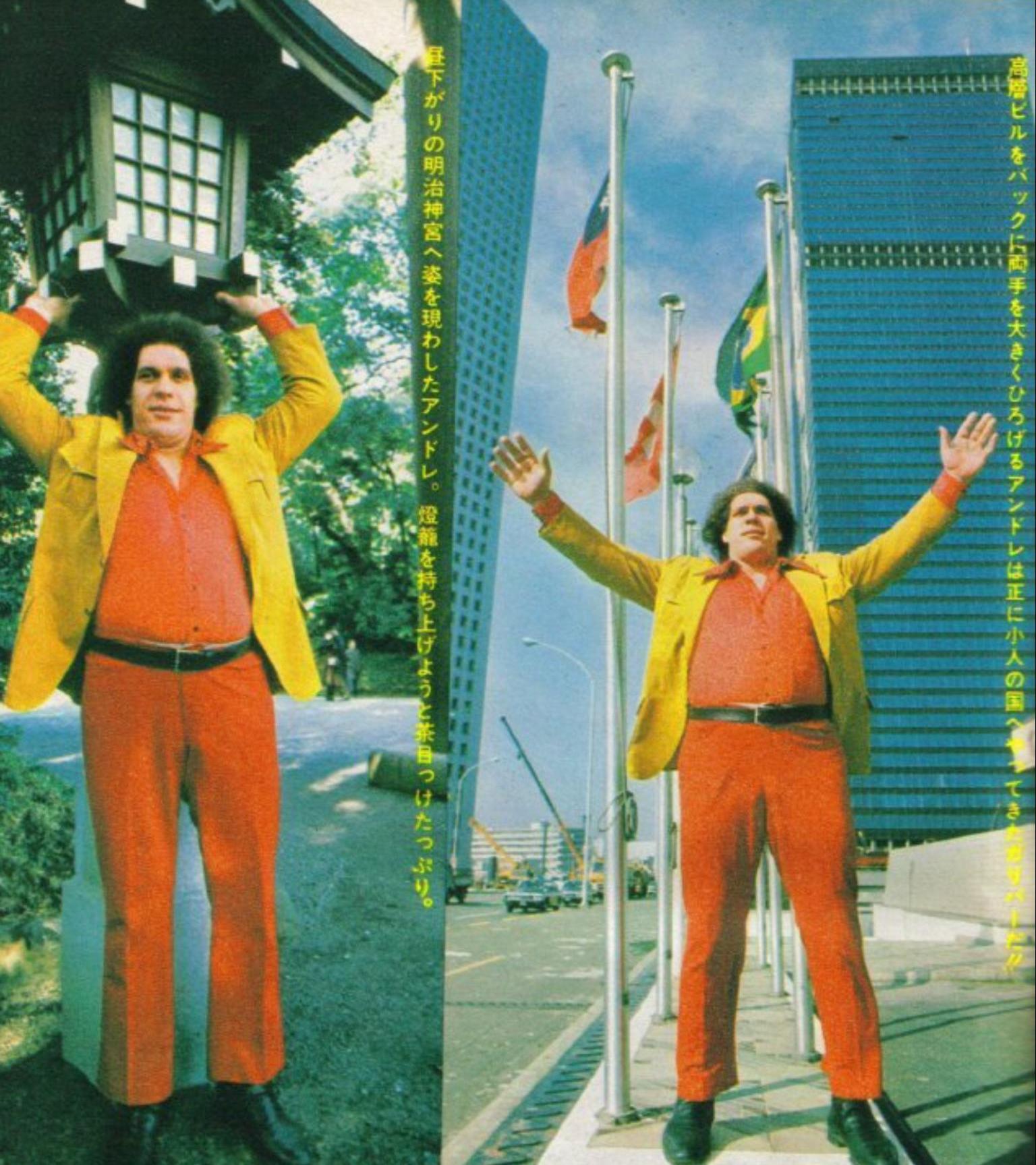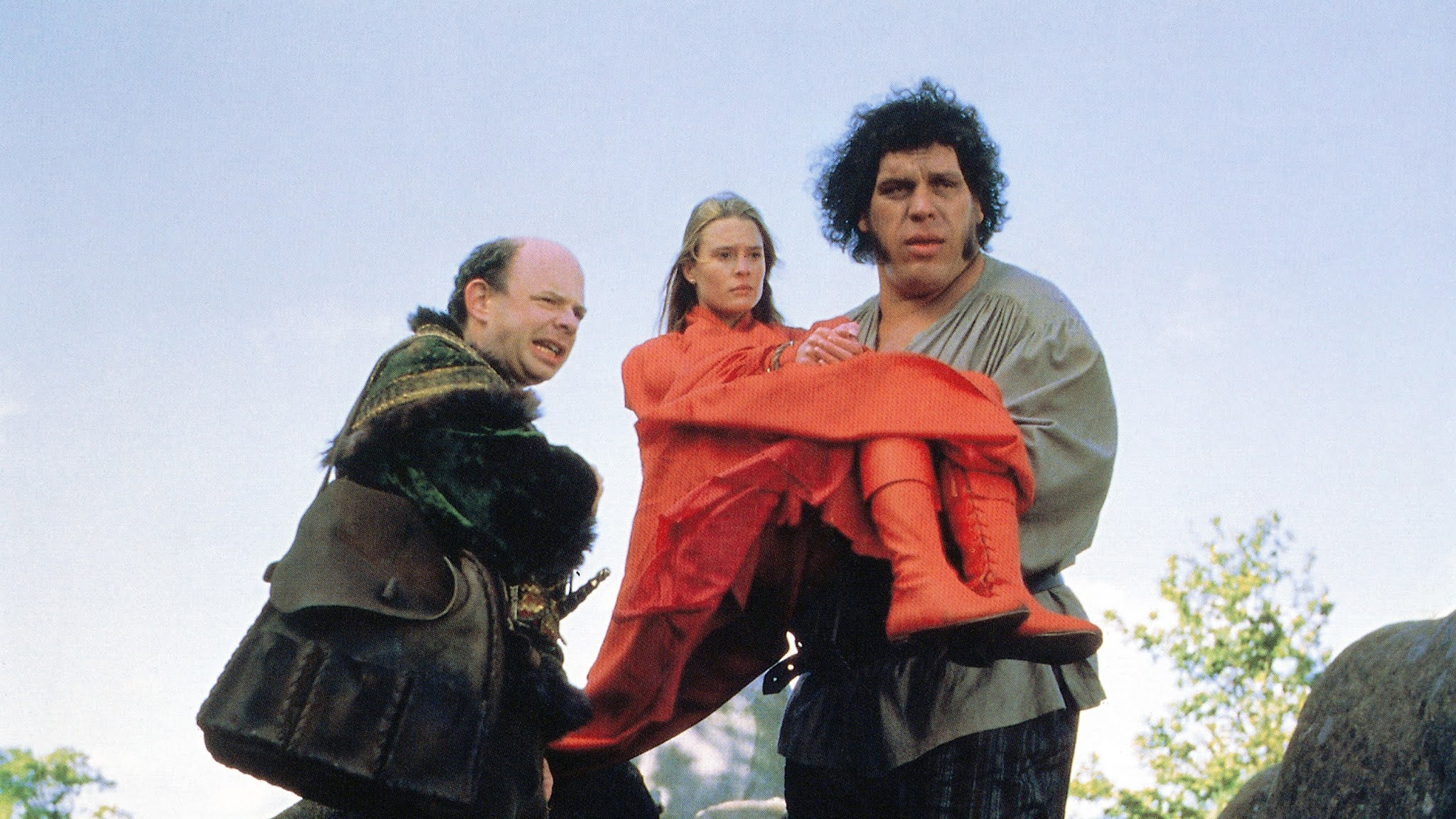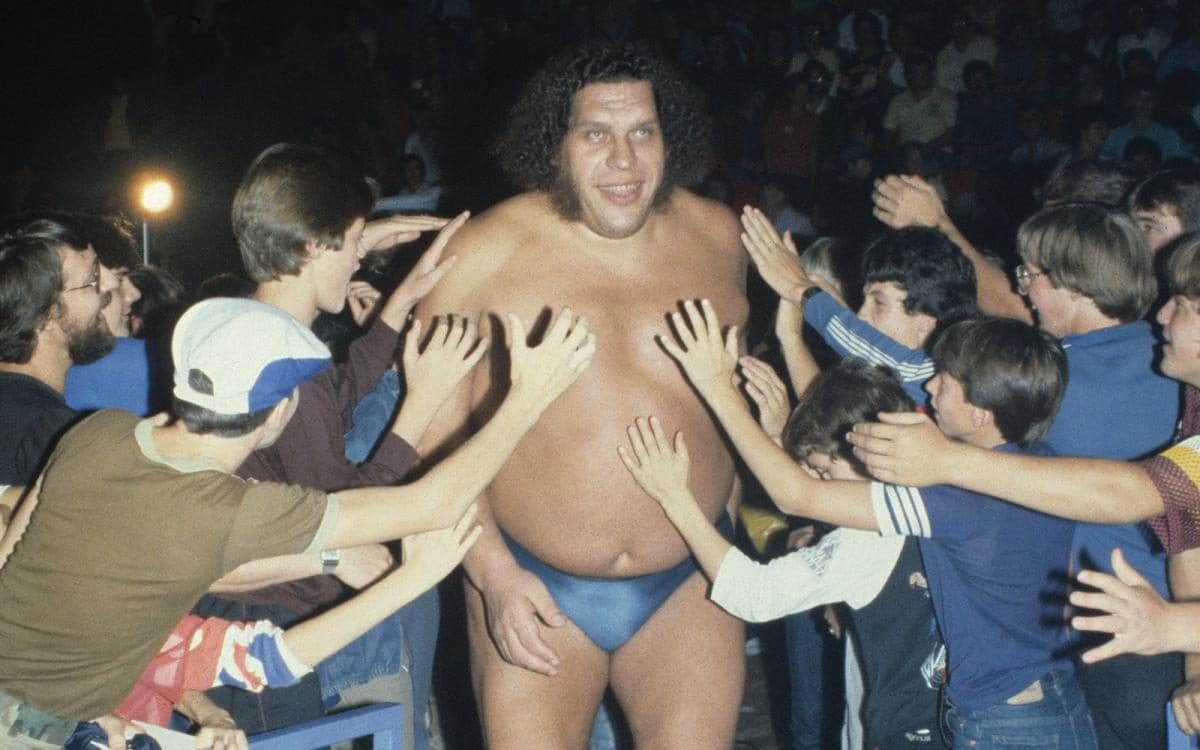For two decades, André Rene Rousimoff towered over the professional wrestling stage like a colossus, winning over fans of all ages with his humble manner, boundless charm, and fearsome charisma in the ring. An exceptional performer whose very presence was enough to get the crowd on its feet, the French-born Gargantua became one of the most recognizable athletes in all world, second to only Muhammad Ali. In an age when wrestling stars were ghettoized from the mainstream, André crossed over to become a transcendent cultural phenomenon, with acting roles that are now considered classics by a generation. André René Roussimoff was born on 19 May 1946 in Coulommiers, Seine-et-Marne, the son of immigrants Boris Roussimoff (1907–1993) and Mariann Roussimoff Stoeff (1910–1997); his father was Bulgarian and his mother was Polish. At birth, André weighed 13 pounds (6 kg); as a child, he displayed symptoms of gigantism, and was noted as “a good head taller than other kids”, with abnormally long hands . In a 1970s television interview, Roussimoff stated that his mother was 5 feet 2 inches tall and his father 6 feet 2 inches tall, and that according to his father his grandfather was 7 feet 8 inches tall. By the time he was 12, Roussimoff stood 191 cm (6 ft 3 in). At the age of 18, Roussimoff moved to Paris and was taught professional wrestling by a local promoter, Robert Lageat, who recognized the earning potential of Roussimoff’s size. He trained at night and worked as a mover during the day to pay living expenses. Roussimoff was billed as “Géant Ferré”, a name based on the Picardian folk hero Grand Ferré, and began wrestling in Paris and nearby areas. Canadian promoter and wrestler Frank Valois met Roussimoff in 1966, years later to become his business manager and adviser. Roussimoff began making a name for himself wrestling in the United Kingdom, Germany, Australia, New Zealand, and Africa. He made his Japanese debut for the International Wrestling Enterprise in 1970, billed as “Monster Roussimoff”. Wrestling as both a singles and tag-team competitor, he quickly was made the company’s tag-team champion alongside Michael Nador. During his time in Japan, doctors first informed Roussimoff that he suffered from acromegaly. Beginning his career in 1966, Roussimoff relocated to North America in 1971. From 1973 to the mid-1980s, Roussimoff was booked by World Wide Wrestling Federation (WWWF) promoter Vincent J. McMahon as a roving “special attraction” who wrestled for promotions throughout the United States, as well as in Japan for New Japan Pro-Wrestling. During the 1980s wrestling boom, Roussimoff became a mainstay of the WWWF (by then renamed the World Wrestling Federation), being paired with the villainous manager Bobby Heenan and feuding with Hulk Hogan. The two headlined WrestleMania III in 1987, and in 1988, he defeated Hogan to win the WWF Championship, his sole world heavyweight championship, on the first episode of The Main Event. As his WWF career wound down after WrestleMania VI in 1990, Roussimoff wrestled primarily for All Japan Pro-Wrestling, usually alongside Giant Baba, until his sudden death. While he was a public figure, André was in many ways a very private man. The Giant was largely trapped in a world he never made, separated from even those closest to him by a language buried, by his physical stature, and by his worldwide celebrity. Outside of the spotlight, this astounding athlete struggled for years with his myriad difficulties caused by his size and stardom. Worse, André fought a constant war with crippling pain caused by both his profession and by the disease that made him who he was. Taken together, these things served to mask rather than accentuate André’s true persona. His size could make life difficult. Andre once noted, “They don’t build anything for a giant.” In the days of telephone dials, he needed a pencil to make a call. He traveled 300 days a year for wrestling, but when he flew he couldn’t squeeze into the airplane lavatory and therefore had to relieve himself in a bucket. Unless he was able to use a van that had been customized for him, driving was torturous: “Many times I have to ride for several hundred miles in the front seat of a car and my back and neck always get so stiff.” He was often the subject of unwanted attention in public, and he felt his personal relationships were affected. “People want to be my friend because of my size. They want to take advantage of me. I don’t like that,” he once said. Being a giant meant Andre could drink heavily. There are stories of him consuming 100 beers or 20 bottles of wine in one sitting. However, actor Cary Elwes, a Princess Bride co-star, has said, “Andre didn’t drink for the sake of drinking — Andre was in a lot of pain, God bless him. His back was injured from carrying all that weight around, and from having other wrestlers breaking chairs over his back.” Roussimoff died at age 46 of congestive heart failure in his sleep at a Paris hotel in the morning of Thursday 27 January 1993. He went to play cards with some friends on the night of Wednesday 26 January. He came back to his hotel room around 1 A.M. CET on 27 January. In the afternoon, his body was found dead in his room by hotel management and his chauffeur. He was in Paris to attend his father’s funeral. While there, he decided to stay longer to be with his mother on her birthday. He spent the day before his death visiting and playing cards with some of his oldest friends in Molien. In his will, he specified that his remains should be cremated and “disposed of”. Upon his death in Paris, his family in France held a funeral for him, intending to bury him near his father. When they learned of his wish to be cremated, his body was flown to the United States, where he was cremated according to his wishes.
(Photo credit: Wikimedia Commons / Pinterest / Andre the Giant official website). Notify me of new posts by email.
Δ Subscribe
